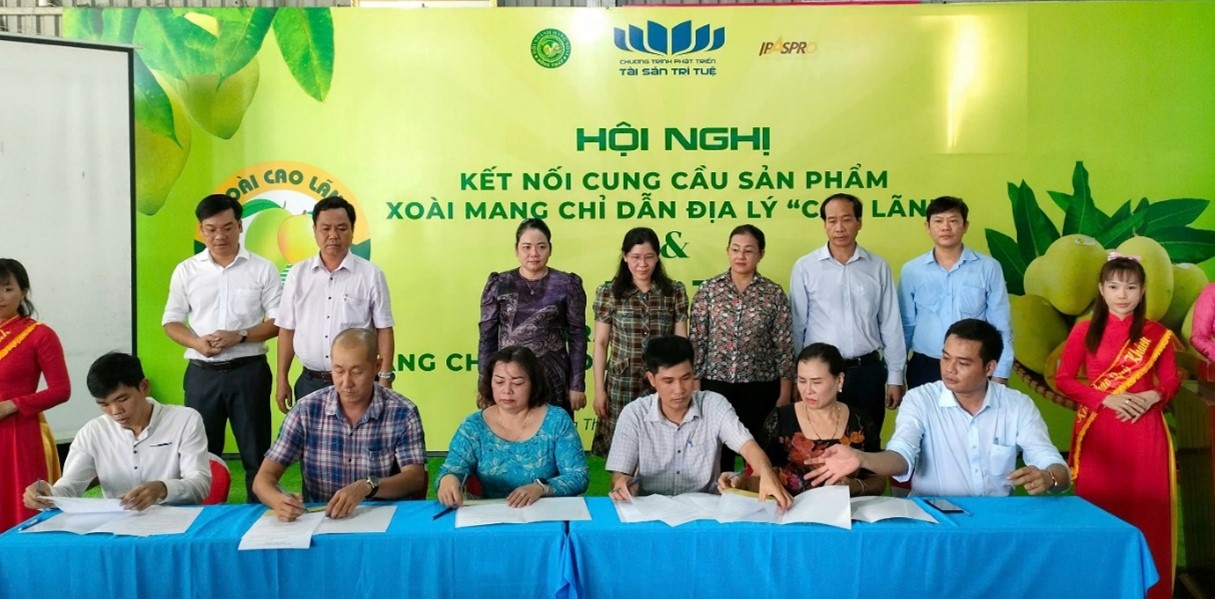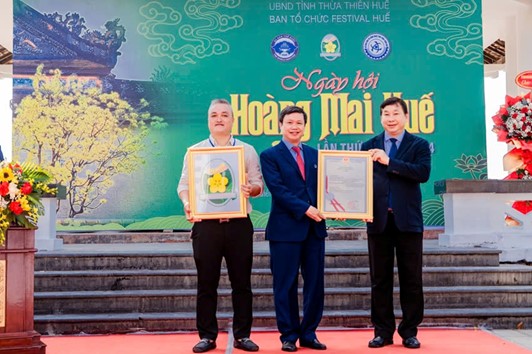Th 4, 28/05/2025 | 17:08 CH
Protection of geographical indications
In 2024, Viet Nam continues to make significant progress in geographical indication protection, contributing to enhancing the brand value of many key and distinctive products. Along with positive results, the development and exploitation of geographical indications still face numerous challenges, requiring synchronized coordination between management agencies and local authorities.
1. Registration of geographical indications
In 2024, IP Viet Nam received 14 applications for geographical indications (GI), issued 11 registration certificates, including many economically and culturally valuable specialties. The protected products are diverse in type and evenly distributed across regions, including: Son Tay Mia chicken (Hanoi), Tra Vinh makapuno coconut (Tra Vinh), Lang Son custard apple (Lang Son), Lang Son clausena indica (Lang Son), Ben Tre clam (Ben Tre), Nam O fish sauce (Da Nang), Thanh Phu rice (Ben Tre), Binh Dinh yellow apricot (Binh Dinh), Hue Thanh Tra grapefruit (Thua Thien Hue), Hue yellow apricot (Thua Thien Hue), Ben Luc Long An seedless lemon (Long An).
Besides continuing to protect GI for products that meet protection conditions, Viet Nam has also made significant strides in protecting and promoting products that have been granted GI Registration Certificates in previous years. Trade promotion programs, fairs, and promotional activities for GI protected products have helped consumers improve product recognition, better understand product value, and expand opportunities to access potential markets.
2. Challenges in protecting geographical indications
The results of 2024 showed positive achievements but the process of protecting and developing geographical indications still faces some significant difficulties, such as:
• Limited pre-feasibility assessment: Some localities have not performed well in pre-feasibility assessments when preparing applications for GI, leading to 03 GI applications being rejected, resulting in a waste of local resources and management resources.
• Small-scale production: The majority of products protected by GI are still produced at the household or small cooperative level, resulting in inconsistent productivity and quality.
• Lack of value chain integration: The organization of production and consumption of products protected by GI remains fragmented, lacking connectivity and an overarching strategy, which diminishes the efficiency of product value exploitation.
• Limitations in management: The control of quality and protection of intellectual property rights for GI products remains inadequate, making them susceptible to counterfeiting.
• Lack of investment in processing technology: Products protected by GI are primarily sold as raw materials, with few deeply processed products to enhance commercial value.
• Export challenges: Some products protected by GI still fail to meet the stringent export standards of major markets like Europe, the U.S., and Japan, resulting in difficulties penetrating these markets.
• Lack of business involvement: The indifference of local businesses and manufacturers is also a major barrier to the sustainable development of GI.
3. Orientation towards 2025
To enhance the value and unlock the potential of GI, the following solutions should be prioritized in the near future:
• Improve the legal framework: Establish stricter protection and control mechanisms for the use of GI to safeguard the rights of producers and enhance brand reputation.
• Strengthen enterprise linkages: Create favorable conditions for businesses to invest in deep processing, brand building, and product promotion, ensuring systematic protection of GI.
• Enhance product quality: Promote the application of science and technology in production and processing to increase productivity and ensure consistent quality.
• Developing export markets: Establish a strategy to promote Viet Nam's GI products in international markets, support the registration of GI protection in countries with high consumption potential.
• Strengthening financial support: The government needs to continue implementing financial support policies, offering preferential loan conditions for enterprises and cooperatives involved in the production and business of GI products.
• Accelerate digital transformation: Develop an electronic traceability system to help consumers easily identify genuine products.
• Promote research and innovation: Support scientific research on plant varieties, cultivation techniques, processing, and preservation to enhance productivity and product quality.
The protection of GI not only helps preserve the reputation and promote the value of traditional specialties but also creates significant opportunities for local economic development and international integration. To fully leverage the potential of GI, it is necessary to continue implementing comprehensive development solutions and strategies that combine the preservation of cultural values, enhancement of product quality, and expansion of consumer markets. The effective execution of these solutions will not only elevate the value of the national brand but also contribute significantly to the sustainable development of Viet Nam's economy in the future.

Cao Lanh geographical indication mango product supply and demand connectivity conference

Deputy Director General Tran Le Hong presented the geographical indication protection certificate and identification logo for Hue yellow apricot products.
Source: Công tác bảo hộ chỉ dẫn địa lý
Geographical Indication and International Trademark
Tin mới nhất
- Announcement on the Priority Acceptance and Processing of Online Applications in the Field of Industrial Property
- Local Administration of Industrial Property Activities
- Management of Industrial Property Representation Services
- Appeal Settlement and Enforcement Support of Industrial Property Rights
- Activities to support IP Development
Các tin khác
- Assurance of industrial property information
- Announcement on Adopting the Vietnamese Version of the International patent classification 2025.01
- Announcement on Adopting the Vietnamese Version of the Nice Classification of Goods and Services 12-2025
- Announcement of the Minister of Science and Technology's Decision on the Appointment of the Director General of IP Viet Nam
- Guidelines for determining the eligibility for patent protection of claimed subject matter of computer program related inventions


